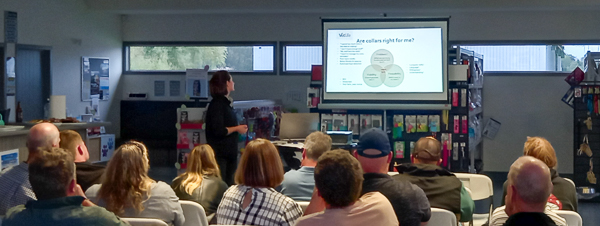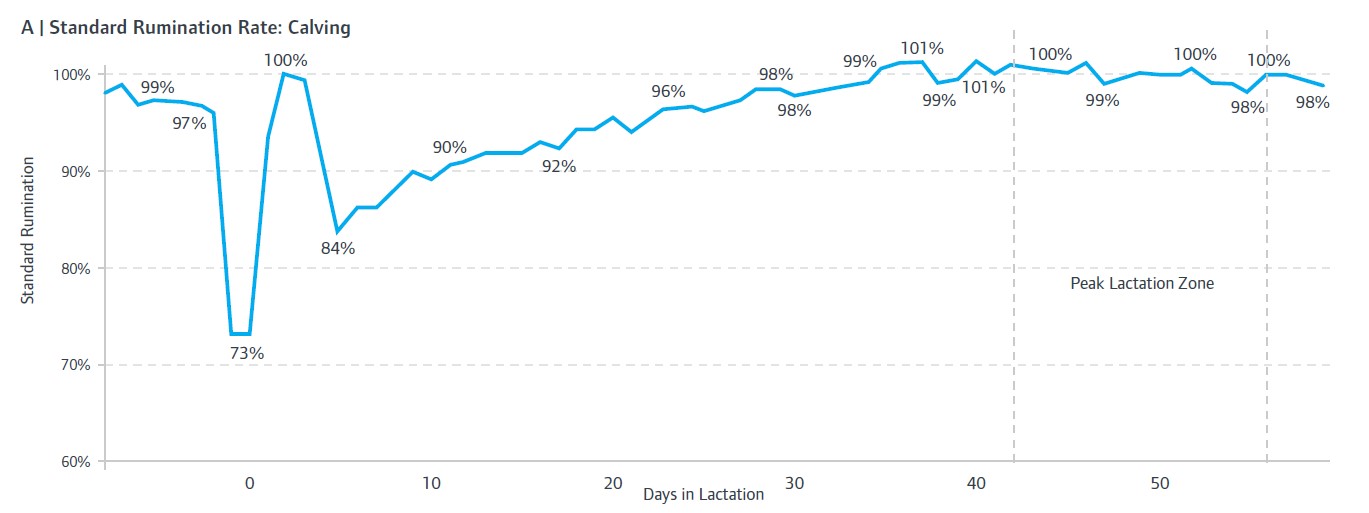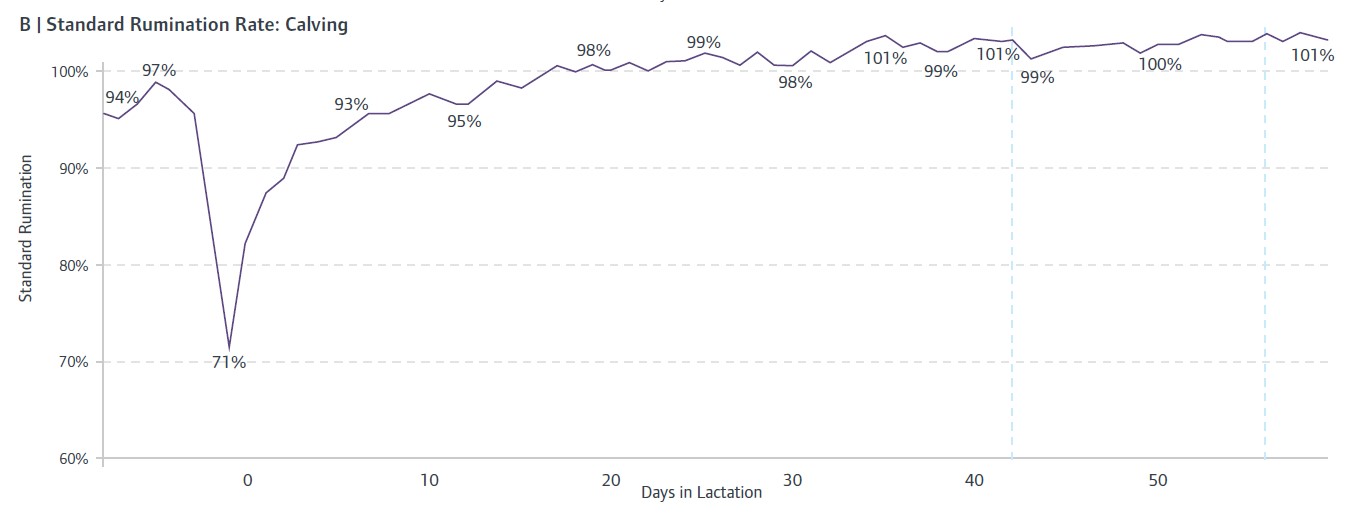
About 90% of illness in the dairy cow occurs in the transition period, i.e. the three weeks before calving through to the three weeks following calving.
There is huge demand on the dairy cows during this time. From being late-pregnancy, non-lactating animals with small changes in energy demand, they go through calving (which is inherently stressful and demanding) to immediately producing milk with an almost fourfold increase in metabolic demand!
It is well known that the increase in nutrient requirement is not matched by an increase in nutrient intake, and the cow enters a state of negative energy balance immediately after calving.
Disorders occurring during the transition period are milk fever, ketosis, retained foetal membranes, mastitis, uterine infection, lameness and more. No matter the disease, illness will have a detrimental effect on cow recovery and milk production, and will potentially affect performance during mating.
With the arrival of technology on farms, it is now possible to utilise animal monitoring to improve management of cows during this critical period. Rumination time can be used as an indicator of feed intake or, more importantly, changes in feed intake and rumination for each individual cow after calving.
It is expected that cows’ rumination times drop at calving. This is due to their reduced feed intake while they are busy calving, and it is perfectly normal (as long as they do not drop too low, indicating calving difficulties). Once the calf is born, a healthy cow will resume eating. We see this as an increase in rumination time each day after calving.
If cows are NOT coping well after calving, this can be seen on rumination time too. There can be several reasons for a decline in rumination: feed allocation is inadequate, social stress is affecting feeding behaviour (often heifers), the cow is experiencing discomfort from calving-related issues or disease, or the milking frequency affects time available for grazing.
Whatever the reason, a decrease in feed intake after calving is not ideal – it exacerbates the Negative Energy Balance we already know is occurring, slowing down the process of recovery and creating the potential for follow-on diseases due to inadequate energy and nutrients.
Figures 1 and 2 are examples from the Reproductive Analysis Report available to Vetlife clients through our CowSmart services. Each graph illustrates the herd average drop in rumination at calving and the following recovery by day of lactation (Day 0 is the day of calving, irrespective of calving date). The graphs are from two different farms with cow collar technology.


Farm A cows have great pre-calving rumination times with an approximate 30% drop in rumination at calving. Cows recover extremely well in the days after calving, taking only 2-3 days to reach 100%. However, on Days 4-5 there is a clear trend that cows experience a feeding check. Recovery back to 100% is prolonged.
Farm B cows have a similar pre-calving average rumination time and a similar drop at calving. Cows are a little slower to recover, but on average the herd have reached 90% only 2-3 days after calving and near 100% by Days 18-20. The key here is the rapid recovery and steady incline in rumination time, which indicates that cows on average have adequate feed available and are willing and able to eat, and this in turn indicates optimum conditions for post-calving recovery.
Key advice for optimum feed intake in freshly calved cows |
|
| *If a considerable number of cows are not ruminating adequately, contact your veterinarian to discuss. |
It is important to understand that there are multiple factors affecting feed intake after calving, and we are in the early days of analysing the effects of rumination drops in early lactation. However, utilising your collars to assess your cows in early lactation is both logical and sensible and provides some added benefits to a monitoring system already in place on your farm.
CowSmart is a support service developed to help our clients with the use of animal monitoring technology. Utilising our knowledge of animal health and our understanding of your farm is key to using your collar system to its full potential. We can assist in deciding on an appropriate approach to transition cow management and implementation on your farm, as well as support during crucial parts of the season.
If you have questions or want to hear more about CowSmart, please get in touch on cowsmart@vetlife.co.nz or ask your local Vetlife veterinarian.